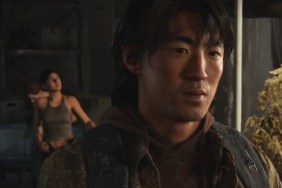We’ve uncovered a ton of possible new information regarding The Last of Us, including where development started, the secrets of the ants, and what you’ll have to face in the game.
Back in July 2006 – coincidentally the exact same month and year as when the TLOU YouTube page was registered – Sony Computer Entertainment America’s Research and Development team published a presentation called “Big Fast Crowds on PS3” which is about sandbox games. In the presentation, it describes the R&D team’s aims:
Goal:
- Simulate large groups of autonomous characters
Requirements:
- Real time: 60 frames per second
- High performance: thousands of individuals
- Take advantage of PS3’s Cell architecture
Additionally, it goes into detail saying the project will be “high performance” and be able to show “up to 15,000 simple characters at 60 fps”. The research would then “be provided to developers as SDK sample code”. The presentation references crowds and flocks of large numbers of animals (click for full screen):
Elsewhere, a video shows an example of the autonomous – as in the individuals in the crowd act independently of each other – crowd in action, with the example being fish:
Of course, this could be for any game, so we researched the man behind the study, Craig Reynolds. Over on his website, he states that he has “worked at the US R&D group of Sony Computer Entertainment near San Francisco, California” since 1998. Much of his other work is regarding “animal behavior” which he applied to “models of emergent teamwork in crowds, such as collective construction based on stigmergy, as seen in social insects.” As described by Wikipedia, Stigmergy is “one of the key concepts in the field of swarm intelligence”, with an example being ants, which “exchange information by laying down pheromones (the trace) on their way back to the nest when they have found food”. Ants, the same creature that has been all over The Last of Us‘ website since the very beginning. The ants on the video are actually Paraponera, more commonly known as Bullet Ants because their bite is so strong, it feels like you’ve been shot. In fact, masochistic researcher Justin O. Schmidt tested animals out to find the most painful one in the world, creating the ‘Schmidt Sting Pain Index’. The top honor went to the Bullet Ant, with Schmidt describing the pain:
Pure, intense, brilliant pain. Like fire-walking over flaming charcoal with a 3-inch rusty nail in your heel.
Bullet Ants swarm autonomously, and a game would have to show thousands of them on screen to truly represent them. While this shows that Bullet Ants could be a formidable opponent in the game, it doesn’t prove they are in The Last of Us – the enemy in that is a killer fungus right? While Cordyceps are undoubtedly one of the killers in the game, it certainly isn’t the only killer. Listen to the end of the TLOU video from the game’s site:
Slightly more noisy than a fungus. At the time, we described the “creepy clicking noises” and “what seems to be a cut off scream”, but the scream is far from normal, and sounds very inhuman. Bullet Ants, much like other ants, use a series of clicks to communicate and, more importantly, when the ant attacks it often emits a high pitched shriek by rubbing bits of its body together that has been described to sound like a human scream. This shriek is a call for other Bullet Ants, and can summon thousands of the poisonous biters for far afield, as the sound is so loud that it can be heard several meters away, even by the human ear.
Bullet Ants can be found in the Atlantic Forest in Brazil, where the now famous BBC footage was taken. We know the jungle/rainforest is a setting for TLOU, as two separate pictures show a forest location, which bears remarkable resemblance to the Atlantic Forest, which you can see here in a picture from Hard Rain Project:

Being in Brazil, the Atlantic Forest is obviously in South America, so it’s interesting to note that the two states shown on the TLOU newspaper as having fallen are two southern states that border Mexico – Texas and New Mexico. Could the ants, and the fungus, have traveled north?
Ants have a close relationship with fungi, and some ants even cultivate and grow fungus, much like we do with crops for food. The ants could possibly be spreading the fungus, and growing it across the world, or even excreting spores through the glands they use to release an unpleasant musky odor as a defense.
At the moment, this is all speculation gleaned from snippets of info, and hours of research – but do you like the potential game premise? Let us know in the comments below.
As a bonus, one commenter from this article will be randomly chosen to win $20 on PSN! Competition closes after the VGAs. Good luck!









